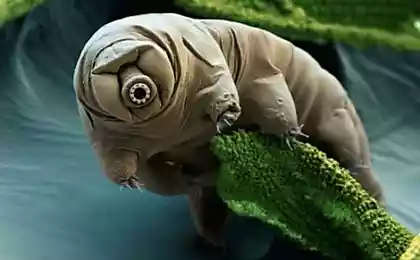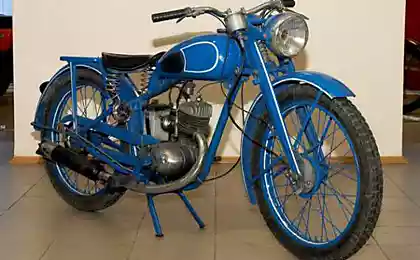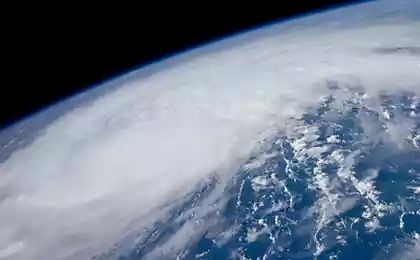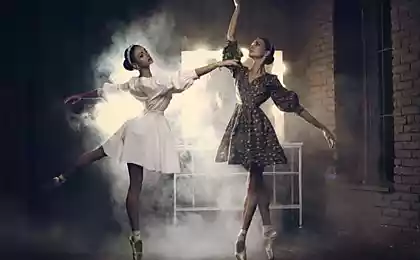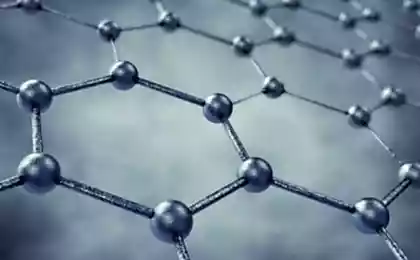1074
How would look a modern metropolis on other planets
Graphic designer Nicholas Lamm (Nickolay Lamm) in his new project decided to show how a modern city would look like in the atmospheres of other planets of our solar system. As an example, he took one of the largest cities in the world, New York. All images were created by astrobiologist M. Browning Vogel (M. Browning Vogel), who within 5 years he worked in Ames Research Center (Ames Research Center, ARC) - one of the offices of NASA - and advised Lamma. This work should serve as a signal for the people who use the Earth's resources is unreasonable. Lamm compares people with ants living in a closed farm.
This Earth. Everything looks casually in New York.

Mercury's atmosphere

That city is shrouded in a thin layer of gas containing hydrogen, which is present in the atmosphere of the planet Mercury. Transparent atmosphere allows you to see the darkness of space and the glow of a nearby sun.
The atmosphere of Venus

Here in New York on Venus. Carbon dioxide and sulfuric acid clouds create a yellowish sheath of hot air, which deteriorates the appearance of the city and the sun. Everything is covered with craters, lava, sulphurous dust and other elements created by volcanoes on Venus.
The atmosphere of Mars
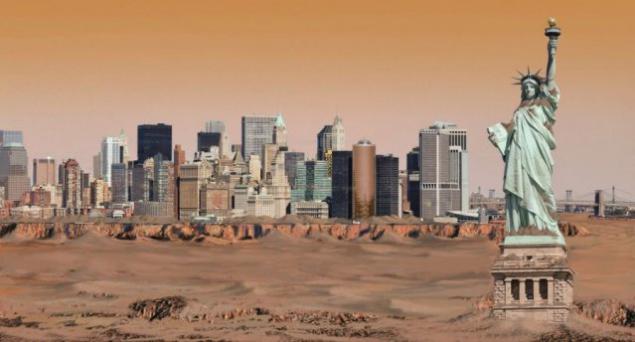
This is a metropolis in a thin and cold gaseous envelope of Mars. The surface of the red color of the fact that the upper layer of the planet is mainly composed of iron oxide. The city is covered with sand due to frequent dust storms.
The atmosphere of Saturn

That would look like New York in the atmosphere of Saturn, which contains a mixture of hydrogen and helium. There is also an impurity of methane, ammonia, phosphine, ethane, and other gases, so the Statue of Liberty no longer has its usual green color (oxidation of copper).
The atmosphere of Jupiter

This is a town in the atmosphere of Jupiter. New York is in the air at an altitude of about 10 kilometers above the surface of the liquid. Clouds are a mixture of water, ammonia, and sulfur gases. The sky is clear. Hydrogen gas, similar to that in the atmosphere of Saturn.
The atmosphere of Uranus

Here in New York in the atmosphere of Uranus. Winds on the planet can reach a speed of 240 m / s, which is higher than the speed of the strongest hurricanes on Earth. That's why from the Statue of Liberty was almost nothing left.
Neptune's atmosphere

In the atmosphere of Neptune City would look like this. It is worth noting that the atmosphere of the planet consists mainly of hydrogen and helium. At the same time there is also the traces of hydrocarbons and, possibly, nitrogen. It also contains a high proportion of water, ammonia and methane ices. Due to the fact that Neptune is the most distant planet in our solar system, it is very dark and cold. Severe wind destroy all the buildings in the city.
Source: www.storagefront.com
This Earth. Everything looks casually in New York.

Mercury's atmosphere

That city is shrouded in a thin layer of gas containing hydrogen, which is present in the atmosphere of the planet Mercury. Transparent atmosphere allows you to see the darkness of space and the glow of a nearby sun.
The atmosphere of Venus

Here in New York on Venus. Carbon dioxide and sulfuric acid clouds create a yellowish sheath of hot air, which deteriorates the appearance of the city and the sun. Everything is covered with craters, lava, sulphurous dust and other elements created by volcanoes on Venus.
The atmosphere of Mars

This is a metropolis in a thin and cold gaseous envelope of Mars. The surface of the red color of the fact that the upper layer of the planet is mainly composed of iron oxide. The city is covered with sand due to frequent dust storms.
The atmosphere of Saturn

That would look like New York in the atmosphere of Saturn, which contains a mixture of hydrogen and helium. There is also an impurity of methane, ammonia, phosphine, ethane, and other gases, so the Statue of Liberty no longer has its usual green color (oxidation of copper).
The atmosphere of Jupiter

This is a town in the atmosphere of Jupiter. New York is in the air at an altitude of about 10 kilometers above the surface of the liquid. Clouds are a mixture of water, ammonia, and sulfur gases. The sky is clear. Hydrogen gas, similar to that in the atmosphere of Saturn.
The atmosphere of Uranus

Here in New York in the atmosphere of Uranus. Winds on the planet can reach a speed of 240 m / s, which is higher than the speed of the strongest hurricanes on Earth. That's why from the Statue of Liberty was almost nothing left.
Neptune's atmosphere

In the atmosphere of Neptune City would look like this. It is worth noting that the atmosphere of the planet consists mainly of hydrogen and helium. At the same time there is also the traces of hydrocarbons and, possibly, nitrogen. It also contains a high proportion of water, ammonia and methane ices. Due to the fact that Neptune is the most distant planet in our solar system, it is very dark and cold. Severe wind destroy all the buildings in the city.
Source: www.storagefront.com









